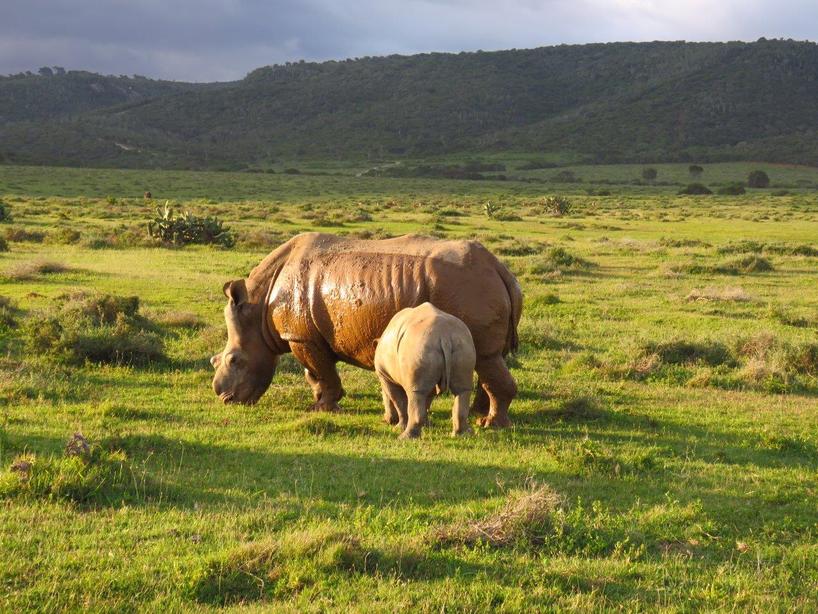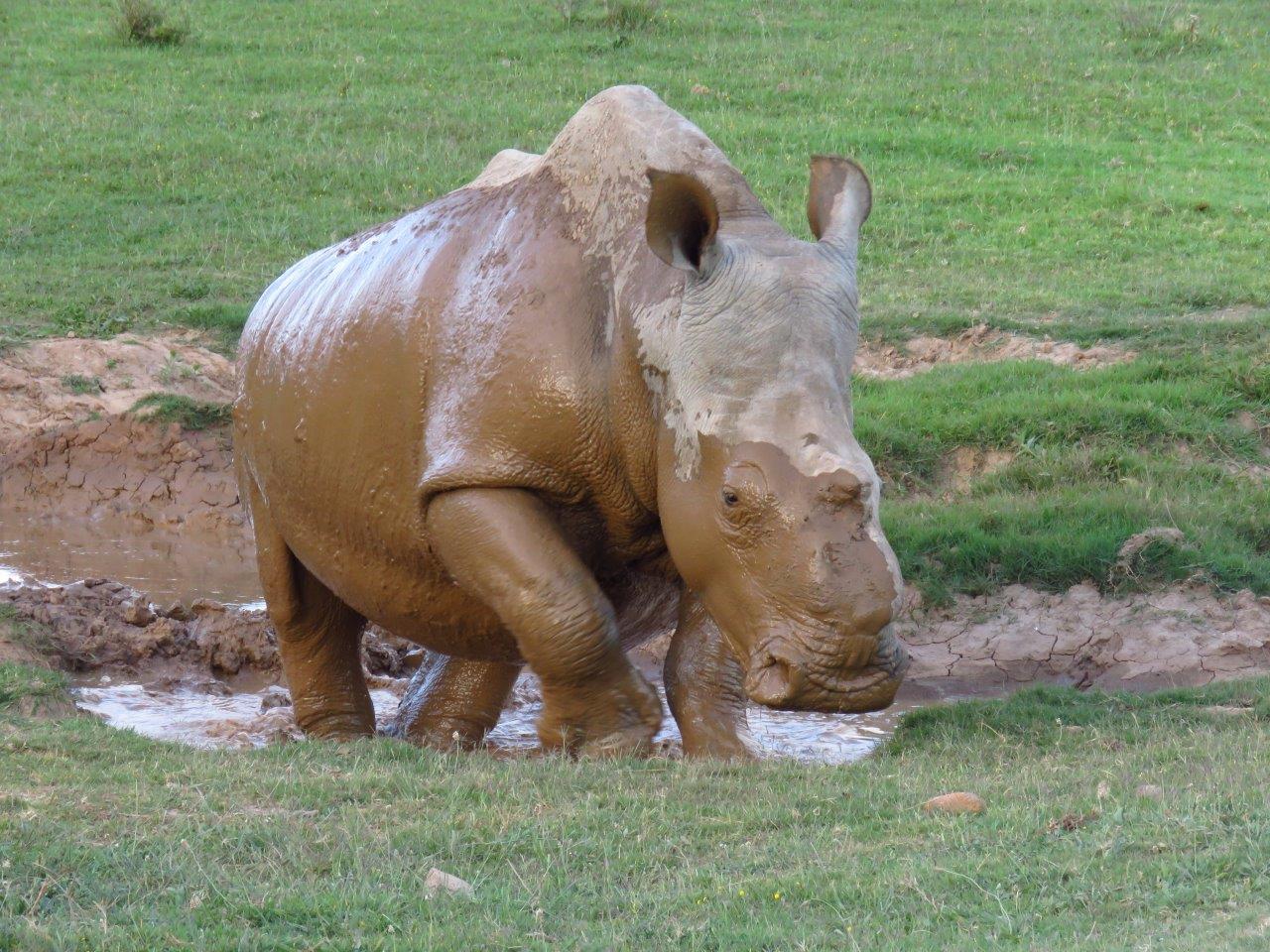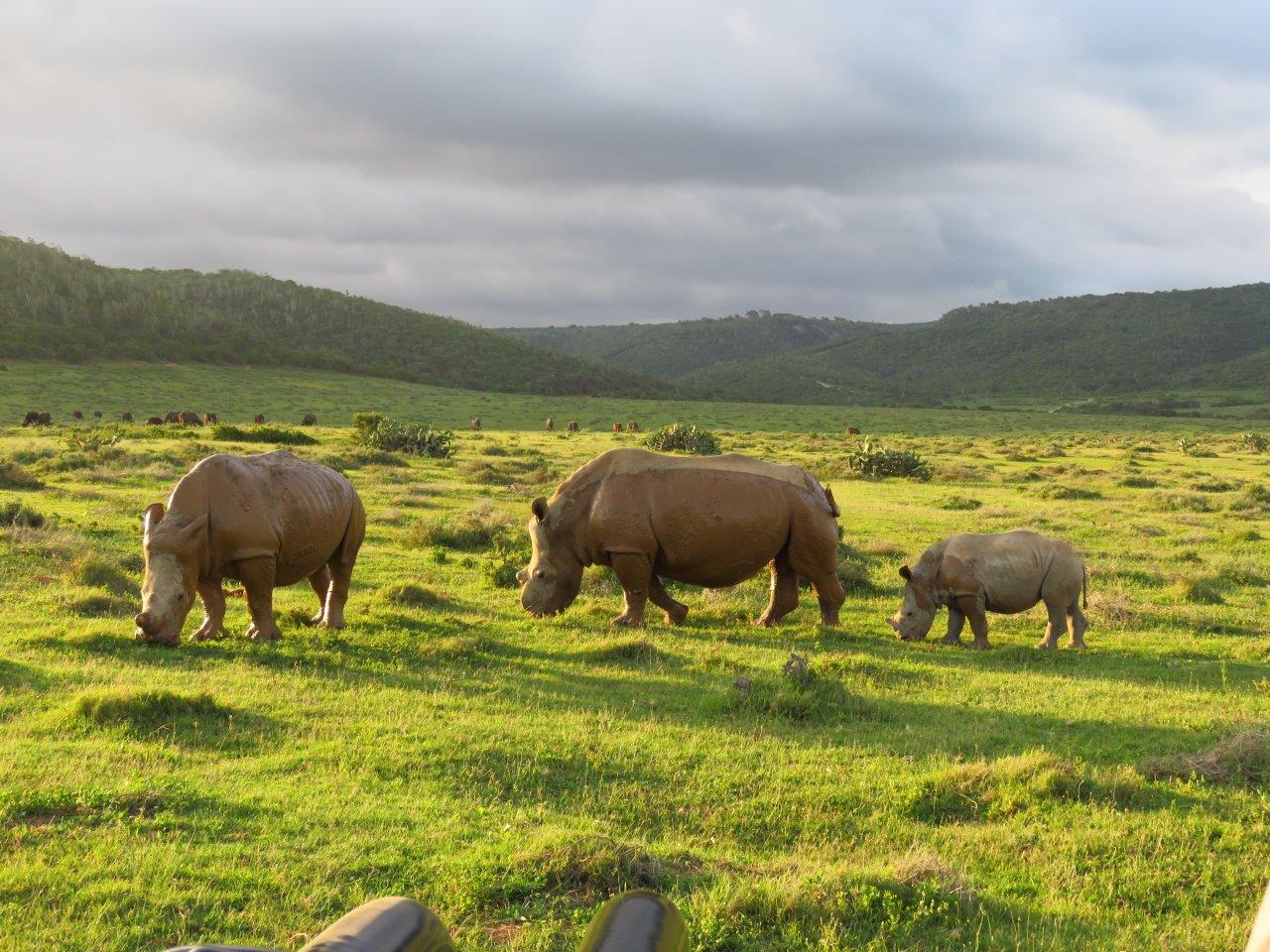Celebrating Colin | Top 10 White Rhino Facts

Today rhino Colin is 10 months old and we are celebrating with a list of our top 10 white rhino facts.
Top 10 White Rhino Facts
- There are five species of rhino. Only the white and black rhino live in Africa while the other three live in Asia.
- The largest of the five species is the white rhino.
- White rhinos are the second largest land mammal, after the African elephant.
- Male white rhinos can grow to 1.8 m (5.9 ft) tall and weigh up to 2,500 kg (5,500 lbs) – that’s the weight of 30 men!
- Despite their large size, the white rhino can run up to 40 km/h (25 mph) for short periods.
- These huge animals don't eat meat but are herbivores and feed mostly on grass.
- White rhinos love to get muddy! The mud protects their skin from getting sunburnt and also acts as an insect repellant.
- Rhinoceroses are mostly solitary animals. However, white rhinos like to live in groups known as a crash. Rhino mum Thandi, Colin and sister Thembi are often together in a crash. This group often includes other females and their calves.
- Female white rhinos are called cows and males are called bulls.
- In South Africa, at least one white rhino is illegally killed every day for its horn. In 2017 so far, three rhinos per day are poached so that their horns can be sold to buyers in Asia. Rhino horn has no proven medicinal properties and cannot cure any disease.

Click to watch a video about how Colin's mum Thandi was attacked by poachers in March 2017. Her horns were both removed but she miraculously survived. Thandi was cared for by wildlife vet Dr. William Fowlds and the team at Kariega. Her recovery was funded by people around the world. We continue to be grateful for their support and generosity. Thandi can now live peacefully on the plains of Kariega Game Reserve with her two calves Thembi and Colin.

If you have seen Thandi and her family at Kariega please add your comments below or share your photographs of them with us on Facebook, Twitter and Instagram. We'd also love to hear from you if this story has inspired you to get involved in rhino conservation in any way.
Thank you to guests Doreen and Al Peacock for the wonderful photographs of Thandi, Colin and Thembi.










